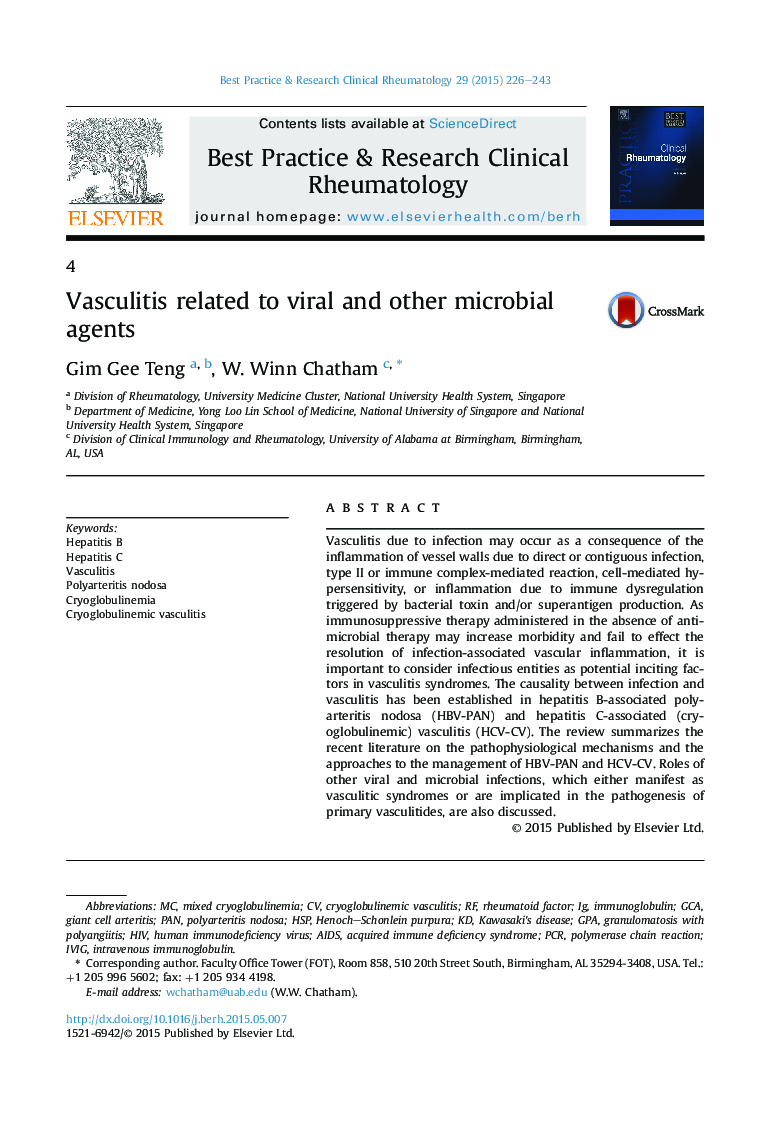| Article ID | Journal | Published Year | Pages | File Type |
|---|---|---|---|---|
| 3342828 | Best Practice & Research Clinical Rheumatology | 2015 | 18 Pages |
Vasculitis due to infection may occur as a consequence of the inflammation of vessel walls due to direct or contiguous infection, type II or immune complex-mediated reaction, cell-mediated hypersensitivity, or inflammation due to immune dysregulation triggered by bacterial toxin and/or superantigen production. As immunosuppressive therapy administered in the absence of antimicrobial therapy may increase morbidity and fail to effect the resolution of infection-associated vascular inflammation, it is important to consider infectious entities as potential inciting factors in vasculitis syndromes. The causality between infection and vasculitis has been established in hepatitis B-associated polyarteritis nodosa (HBV-PAN) and hepatitis C-associated (cryoglobulinemic) vasculitis (HCV-CV). The review summarizes the recent literature on the pathophysiological mechanisms and the approaches to the management of HBV-PAN and HCV-CV. Roles of other viral and microbial infections, which either manifest as vasculitic syndromes or are implicated in the pathogenesis of primary vasculitides, are also discussed.
